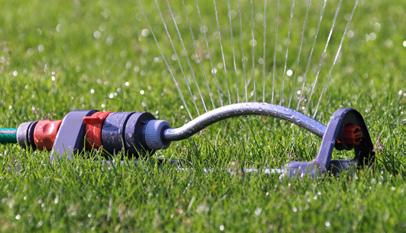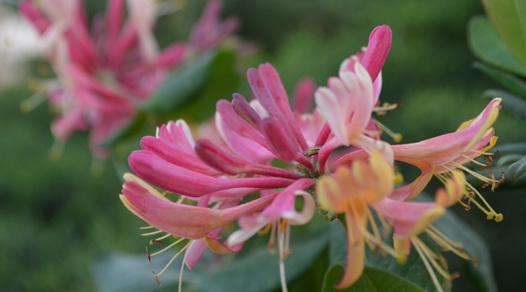
4 minute read
SUSTAINABLE SERVICES continued
Planting Natives
WOS made a focus on using native plants throughout the property for a sustainable approach to landscape design and maintenance. Native plants are attractive for many reasons. They require much less watering, fertilizer, and pesticides, they can prevent water run-off and improve air quality, help decrease pollution because they eliminate the need for mowers and other equipment, and more. Many prairie type plantings were used to complement the overall design concept of the property. Perennial grasses were used to soften heavily hardscaped areas and hard angles. Plant selections were also made to be tolerant of various adverse elements including salt, full sun, reflective heat, shade, limited soil profile and snow build-up.
body and the environment. Nature is a natural antidepressant, provides vitamin D exposure, can improve self-esteem and mood, and has been linked to greater feelings of revitalization and positive engagement. By not using a traditional brick and mortar gym means you’re not adding to additional energy usage.
WOS provided native trees and plants that fit into the natural theme of the design and that provided a natural food source and cover for migratory songbirds. Deer resistant trees and plants were selected. As pests and diseases emerge in the future, it was important that we choose a wide variety of plants.
Tall brush was left next to the water for both wind protection and wildlife sustainability. Conifers were included for winter habitat and protection as well as wind screens. Trees that bear fruit and seeds were planted to help feed wildlife. Perennials high in nectar and seed production were included to sustain wildlife.
Pollinator Habitats
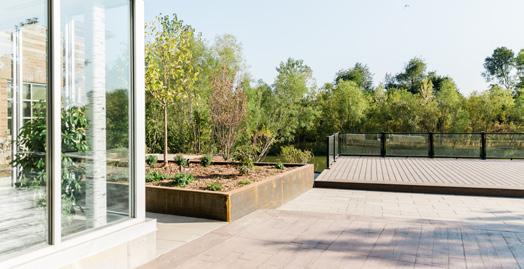
Pollinator populations are experiencing critical population declines. Monarch butterfly populations have declined by 80% over the past 20 years, honeybee hive losses top 40% annually, and as of 2017, the rusty-patched bumble bee is an endangered species. Projects like the one at the WSC corporate office are helping to curb that decline.
Nature Walking Trail
A nature walking trail in a 3 acre area west of the building was added that includes meandering concrete walking trails, seating areas, tree and shrub groupings, bee pollinator (low native prairie) areas, butterfly pollinator (tall native prairie) areas and accent landscape lighting. A temporary cover crop of oats was planted to provide erosion control until it was time to plant the pollinator areas. There are many benefits to exercising in nature for both the
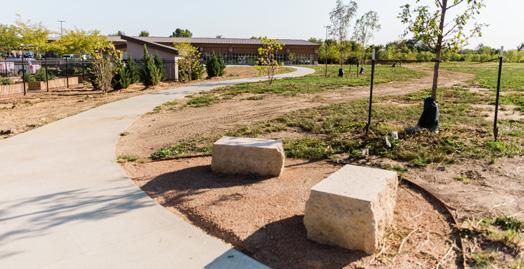
WOS and WSC took advantage of a partnership to help honeybees and monarch butterflies through the Bee and Butterfly Habitat Fund (BBHF), who assisted in the design, development and implementation of the pollinator areas through their program called Seed a Legacy. BBHF is an organization whose mission is to increase and improve pollinator habitat by working with landowners, conservationists, scientist and beekepers to design and develop precision seed mixtures to build a healthy and sustainable pollinator habitat.
The seeds were broadcasted by hand with a honeybee clover mix and the other half to a monarch mix – a diverse mix with 63 wildflower species – to minimize erosion while seeds establish themselves. By planting two separate mixtures, WSC provided abundant lush and dense forage with the clover mix, which can also be used as a prescribed fire break. The monarch mix contains slower-growing wildflowers that will provide nectar resources for monarchs and other pollinators and a place for monarchs to lay eggs.
Xeriscaping And Water Efficient Landscaping
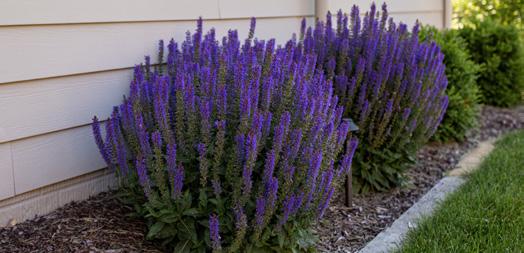
Low maintenance and efficient landscaping are ways that many property owners are being sustainable and stewards of the land. WSC’s headquarters used water efficient landscaping in a few ways.
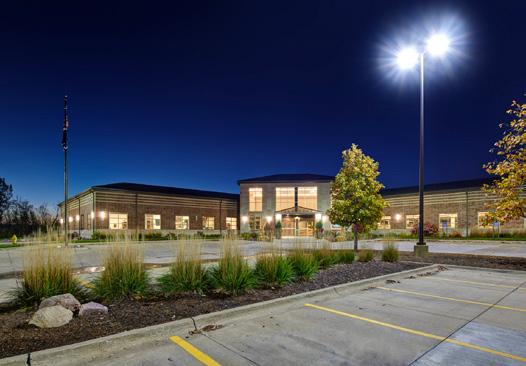
Most of the plant material installed tolerates dry periods with little to no supplemental watering once established, along with being animal resistant. Areas that could possibly be flooded were planted with plants that tolerate wet roots from time to time. The higher elevations of the property are usually dry due to wind and sun – those areas were planted with plant material that tolerates those conditions. Hardwood mulch was used within planting beds and around trees to conserve water and reduce weeds. Watering bags were used during tree establishment to minimize any evaporation and ensure water goes down to the root system. Lastly, sod/grass was held to a minimum.
Edible Gardening
WSC prides itself on putting employees first, and a community garden was a primary focus of the exterior of the building remodel. The community garden is located within the walking trail area, measuring 98 feet in length by 44 feet in width for a total area of approximately 4,300 square feet. The garden area consists of a tool shed, 17 raised planting beds throughout, compacted crushed granite pathways, automatic drip irrigation system, and is enclosed by fencing salvaged from previous community garden. We worked to provide a beautiful and inviting garden entrance by adding long-blooming plants. The re-use of plant materials salvaged from the previous garden was made a priority, including grapevines, espaliered apple trees, shrubs and grasses. We installed plantings around the perimeter that are both deer resistant and great pollinators to ensure veggies get plenty of “bee time”. Low maintenance was the goal, so native and drought resistant plants were prioritized above all else. Compacted gravel was used between raised beds to eliminate the need for herbicides for weed management.
Biophilic Design Through Landscaping & Interior Plantscaping
The practice of incorporating plants into built environments, both indoor and outdoor, is known as biophilic design. Our team of landscape & interior plantscape designers not only place focus on beauty when selecting plants for home and property owners, but also sustainability and biodiversity.
When selecting plants for outdoor environments, native plant species and pollinator friendly species are at the forefront of consideration. Through use of native plants, home and property owners can reduce the use of resources such as water and energy as well as chemical fertilizers and pesticides which can damage our natural ecosystem. Pollinators are essential to our ecosystem as they fertilize plants, causing them to produce seeds, fruit and new life.
Our interior plantscaping team brings plants indoors. WOS offers personalized interior plant design through moss and living wall installations, interior plantscaping, seasonal fresh floral displays, interior holiday plant arrangements and more.
Plants Provided to the Local Area
Over 18,646 annual plants provided to local area
Spring & Summer Annuals – 8,037
Such as: pansies, petunias, impatiens, coleus, lobelia, verbena, geranium, salvia, vinca vine
Fall Annuals – 2,304
Such as: mums, kale, cabbage, purple fountain grass, ornamental peppers
House/Tropicals – 7,505
Such as: pothos, dracaena, bromeliad, sansevieria, ficus, jasmine, hibiscus
Winter Poinsettias – 800
Responsible Resource Use
Water
The project used water responsibly in their care for plants, newly planted trees, and establishing the lawn. The care of the landscape planning accounted for the existing site conditions instead of amending the site for long term sustainably.
